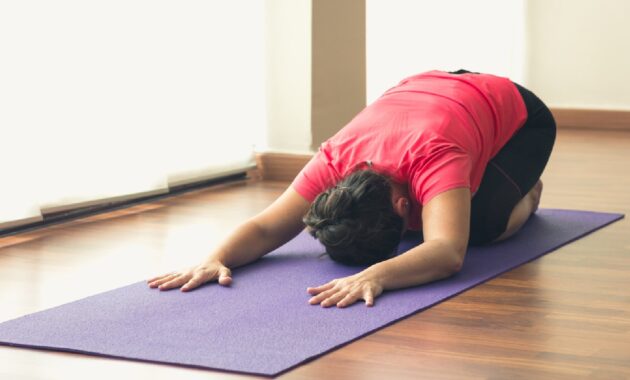Yin Yoga gives is a gentle form of yoga that makes you aware of every inch and angle of your body, as well as breath. It helps mindfulness to break the clutter and chatter of everyday hustle-bustle. This type of yoga is the opposite of Yang Yoga, which is more focussed on asanas that can increase your stamina and strength.
What is yin yoga?
Yin yoga is a slow-moving, passive kind of yoga, to maintain poses for three to five minutes, or even longer, says holistic health expert Dr Mickey Mehta. Yin yoga focuses on the connective tissues such as ligaments, tendons, and fascia rather than the muscles, in contrast to more dynamic and aggressive types of yoga like Vinyasa or Ashtanga. It seeks to improve the body’s energy flow, induce relaxation and develop flexibility.
Yin yoga could also be understood as postures in poetry, flow of movements. So, it can be postures in poetry flowing gracefully from one posture to the other after getting established with breath.

What are the benefits of Yin Yoga?
Holding a yoga pose for an extended period has many benefits. As per a 2021 study published in the Journal of the American Pharmacists Association, 20 people aged between 18 and 66 joined a six-week long yin yoga and meditation programme. The participants showed a drop in stress and anxiety levels after the programme. An increase in mindfulness was also noticed in the participants.
Here are some benefits:
1. Improves flexibility
Yin yoga helps to enhance joint mobility and flexibility. It does so by gently stretching and stressing the connective tissues, says the expert.
2. Stress relief
The postures and the emphasis on breathing give the mind anything soothing to focus on. This makes it simpler to enter the sense of calm and reduce stress.
3. Improves blood circulation
Breathing into each yin stance allows more oxygen to enter the body, which is good for us. In return, it raises and modifies blood circulation, says Dr Mehta.
4. Emotional strength
It develops perseverance, emotional confidence and resilience. The best method to get better is to stay still and deal with whatever comes up at the time, one breath at a time. Yin teaches us to be gentle, understanding and stable.
5. Effect on mind
While maintaining the yin postures, practitioners are urged to be present-minded and allow thought patterns to arise without being attached to them. Body enters into the parasympathetic nervous system, which has the effect of calming, revitalising and stabilising the body.
6. Induces meditative state of mind
Yin toga helps to balance the body’s energy flow. It serves as an excellent complement to meditation, fostering a calm and focused mind, says Dr Mehta.
7. Mind and body awareness
Yin yoga is all about slow pace and emphasis on mindfulness. They help to cultivate a deeper connection between the mind and body.
What are the best Yin Yoga poses?
You can try doing yin yoga poses to get a break from your busy life. Here are some asanas:
1. Child’s pose (Balasana)
To do the child’s pose, start on your hands and knees. Sit back on your heels while reaching your arms forward. Hold this position for about five minutes while focusing on deep breaths and relaxing into the stretch.

2. Dragon pose (Utthan Pristhasana)
• You can start on your hands and knees, and put a foot in between your hands.
• Step forward with your front foot until your knee is directly over your heel.
• Return your rear knee as far as possible. Hold it for about five minutes, and feel the stretch in the hip flexors and groin.
3. Butterfly pose (Baddha Konasana)
Sit with the soles of your feet together, allowing your knees to drop to the sides. Hold it for three to five minutes, gently pressing your knees towards the floor to open the hips.
People with certain conditions, such as severe joint issues, recent surgeries or acute injuries, should consult with a doctor before practicing yin yoga.
#Yin #Yoga #Benefits #Poses
